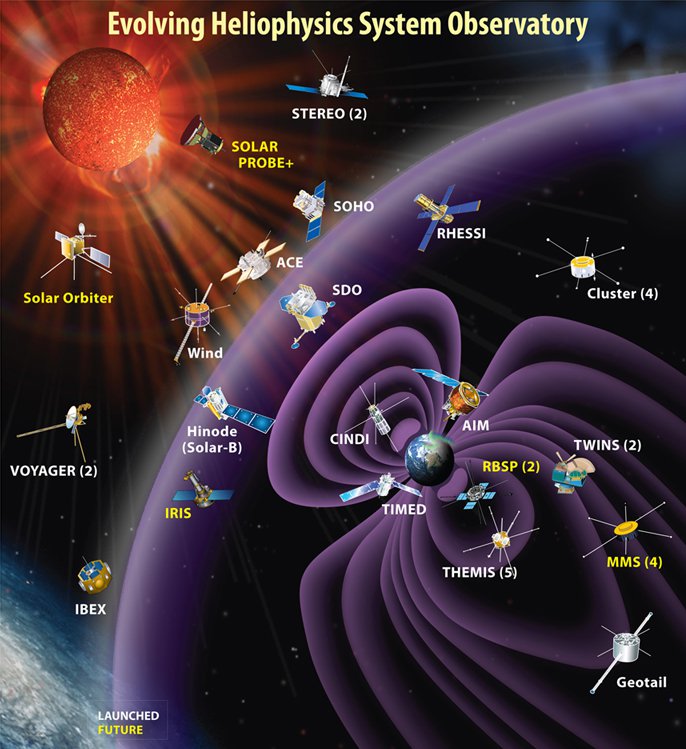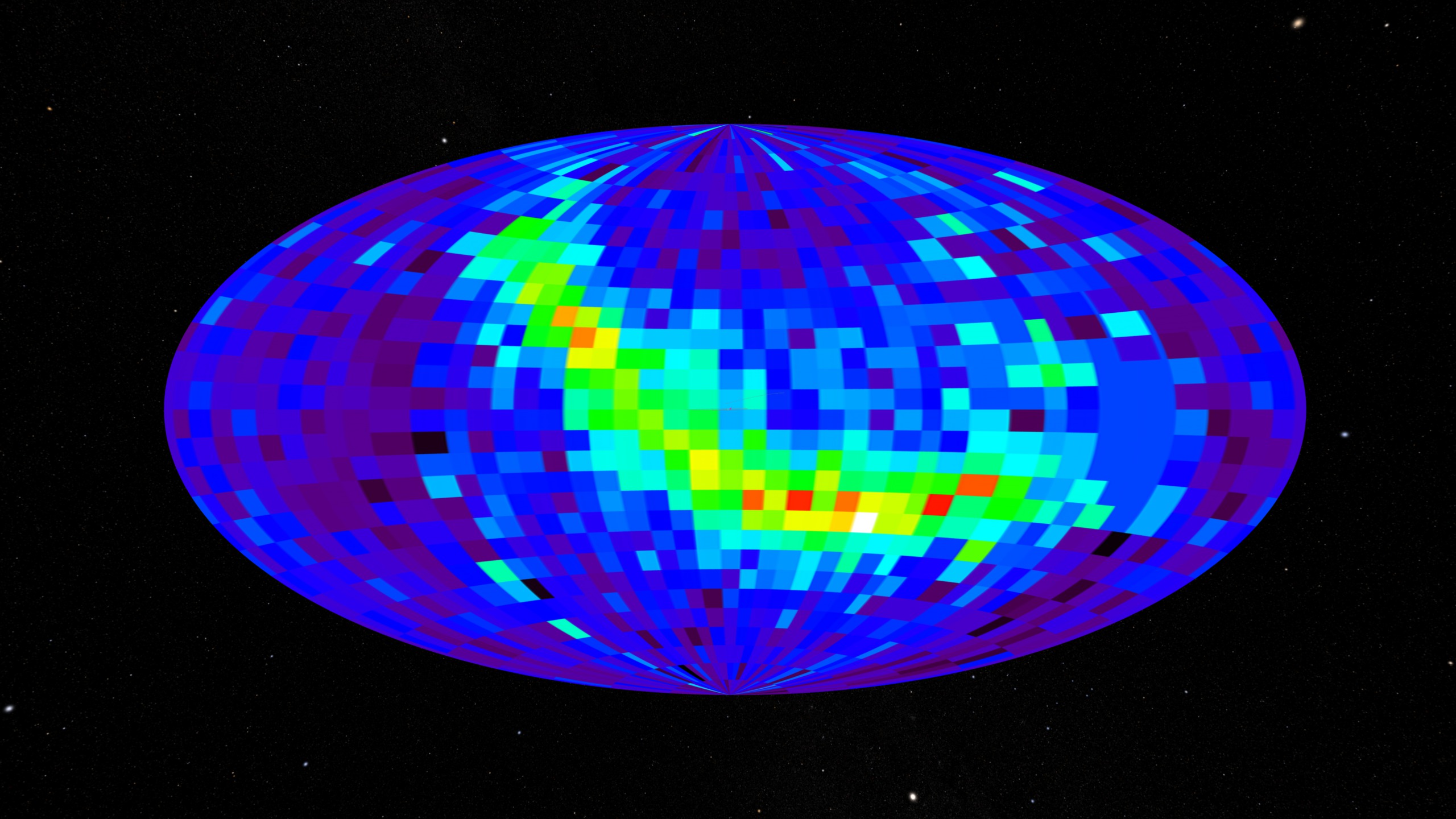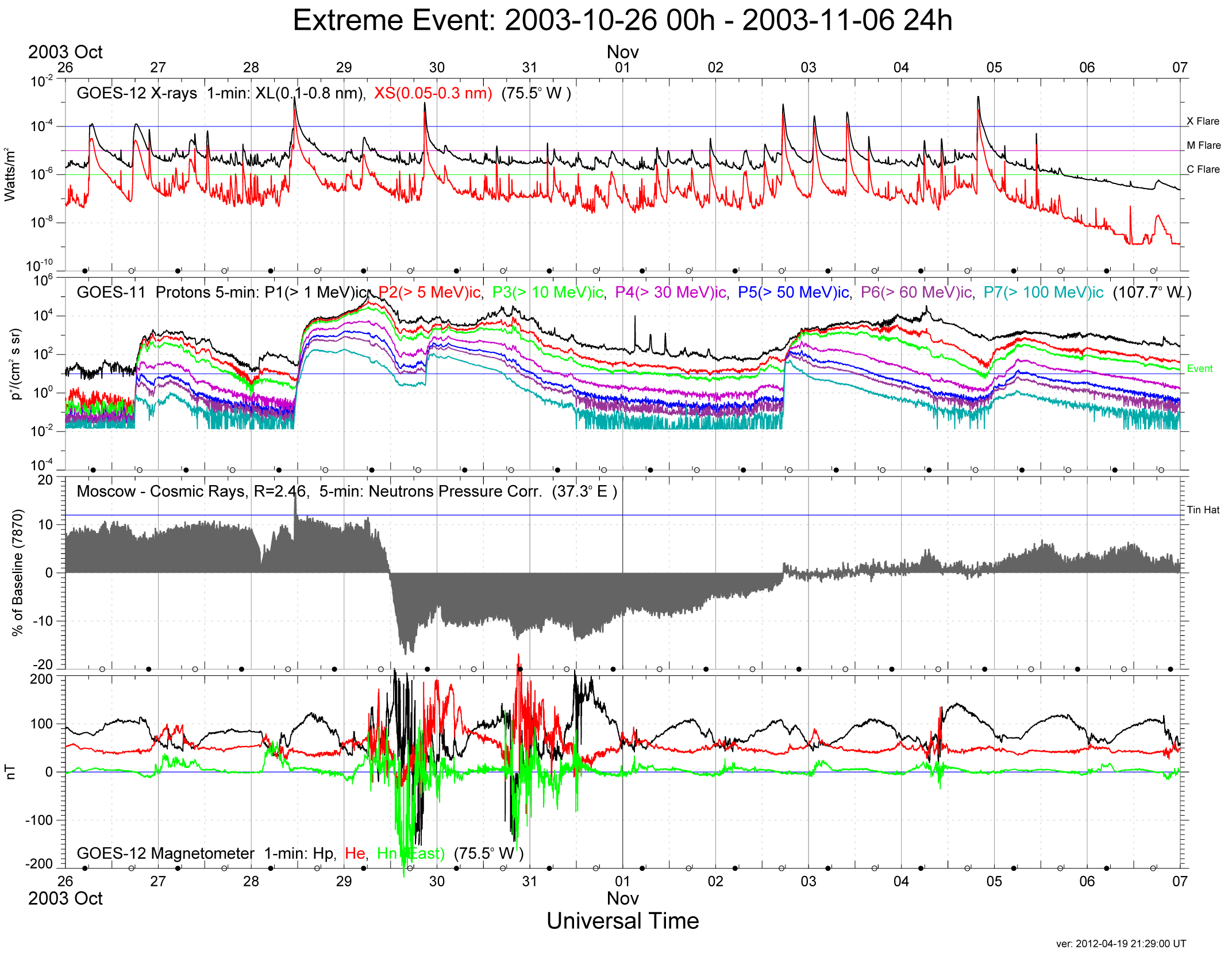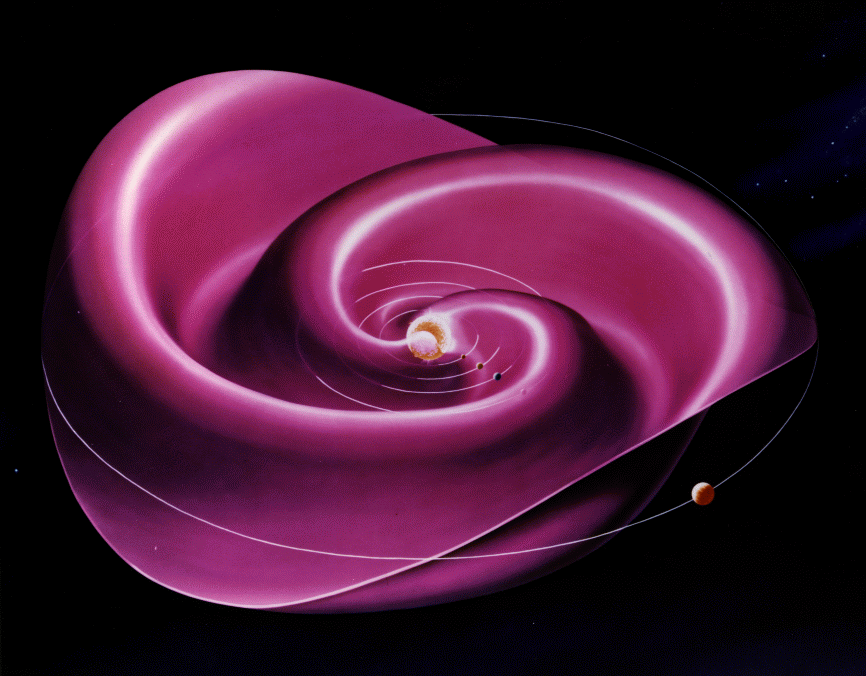|
Heliophysics
Heliophysics (from the prefix " helio", from Attic Greek ''hḗlios'', meaning Sun, and the noun "physics": the science of matter and energy and their interactions) is the physics of the Sun and its connection with the Solar System. NASA defines heliophysics as "(1) the comprehensive new term for the science of the Sun - Solar System Connection, (2) the exploration, discovery, and understanding of Earth's space environment, and (3) the system science that unites all of the linked phenomena in the region of the cosmos influenced by a star like our Sun." Heliophysics concentrates on the Sun's effects on Earth and other bodies within the Solar System, as well as the changing conditions in space. It is primarily concerned with the magnetosphere, ionosphere, thermosphere, mesosphere, and upper atmosphere of the Earth and other planets. Heliophysics combines the science of the Sun, corona, heliosphere and geospace, and encompasses a wide variety of astronomical phenomena, including ... [...More Info...] [...Related Items...] OR: [Wikipedia] [Google] [Baidu] |
NASA
The National Aeronautics and Space Administration (NASA ) is an independent agencies of the United States government, independent agency of the US federal government responsible for the civil List of government space agencies, space program, aeronautics research, and outer space, space research. NASA was National Aeronautics and Space Act, established in 1958, succeeding the National Advisory Committee for Aeronautics (NACA), to give the U.S. space development effort a distinctly civilian orientation, emphasizing peaceful applications in space science. NASA has since led most American space exploration, including Project Mercury, Project Gemini, the 1968-1972 Apollo program, Apollo Moon landing missions, the Skylab space station, and the Space Shuttle. NASA supports the International Space Station and oversees the development of the Orion (spacecraft), Orion spacecraft and the Space Launch System for the crewed lunar Artemis program, Commercial Crew Program, Commercial Crew ... [...More Info...] [...Related Items...] OR: [Wikipedia] [Google] [Baidu] |
Heliosphere
The heliosphere is the magnetosphere, astrosphere and outermost atmospheric layer of the Sun. It takes the shape of a vast, bubble-like region of space. In plasma physics terms, it is the cavity formed by the Sun in the surrounding interstellar medium. The "bubble" of the heliosphere is continuously "inflated" by plasma originating from the Sun, known as the solar wind. Outside the heliosphere, this solar plasma gives way to the interstellar plasma permeating the Milky Way. As part of the interplanetary magnetic field, the heliosphere shields the Solar System from significant amounts of cosmic ionizing radiation; uncharged gamma rays are, however, not affected. Its name was likely coined by Alexander J. Dessler, who is credited with first use of the word in scientific literature in 1967. The scientific study of the heliosphere is heliophysics, which includes space weather and space climate. Flowing unimpeded through the Solar System for billions of kilometres, the solar ... [...More Info...] [...Related Items...] OR: [Wikipedia] [Google] [Baidu] |
Solar Activity
Solar phenomena are natural phenomena which occur within the atmosphere of the Sun. These phenomena take many forms, including solar wind, radio wave flux, solar flares, coronal mass ejections, coronal heating and sunspots. These phenomena are believed to be generated by a helical dynamo, located near the center of the Sun's mass, which generates strong magnetic fields, as well as a chaotic dynamo, located near the surface, which generates smaller magnetic field fluctuations. The total sum of all solar fluctuations is referred to as solar variation. The collective effect of all solar variations within the Sun's gravitational field is referred to as space weather. A major weather component is the solar wind, a stream of plasma released from the Sun's upper atmosphere. It is responsible for the aurora, natural light displays in the sky in the Arctic and Antarctic. Space weather disturbances can cause solar storms on Earth, disrupting communications, as well as geomagnetic storms ... [...More Info...] [...Related Items...] OR: [Wikipedia] [Google] [Baidu] |
Geospace
Outer space, commonly shortened to space, is the expanse that exists beyond Earth and its atmosphere and between celestial bodies. Outer space is not completely empty—it is a near-perfect vacuum containing a low density of particles, predominantly a plasma of hydrogen and helium, as well as electromagnetic radiation, magnetic fields, neutrinos, dust, and cosmic rays. The baseline temperature of outer space, as set by the background radiation from the Big Bang, is . The plasma between galaxies is thought to account for about half of the baryonic (ordinary) matter in the universe, having a number density of less than one hydrogen atom per cubic metre and a kinetic temperature of millions of kelvins. Local concentrations of matter have condensed into stars and galaxies. Studies indicate that 90% of the mass in most galaxies is in an unknown form, called dark matter, which interacts with other matter through gravitational but not electromagnetic forces. Observatio ... [...More Info...] [...Related Items...] OR: [Wikipedia] [Google] [Baidu] |
Magnetosphere
In astronomy and planetary science, a magnetosphere is a region of space surrounding an astronomical object in which charged particles are affected by that object's magnetic field. It is created by a celestial body with an active interior dynamo. In the space environment close to a planetary body, the magnetic field resembles a magnetic dipole. Farther out, field lines can be significantly distorted by the flow of electrically conducting plasma, as emitted from the Sun (i.e., the solar wind) or a nearby star. Planets having active magnetospheres, like the Earth, are capable of mitigating or blocking the effects of solar radiation or cosmic radiation, that also protects all living organisms from potentially detrimental and dangerous consequences. This is studied under the specialized scientific subjects of plasma physics, space physics and aeronomy. History Study of Earth's magnetosphere began in 1600, when William Gilbert discovered that the magnetic field on the ... [...More Info...] [...Related Items...] OR: [Wikipedia] [Google] [Baidu] |
Space Weather
Space weather is a branch of space physics and aeronomy, or heliophysics, concerned with the time varying conditions within the Solar System, including the solar wind, emphasizing the space surrounding the Earth, including conditions in the magnetosphere, ionosphere, thermosphere, and exosphere. Space weather is distinct from, but conceptually related to, the terrestrial weather of the atmosphere of Earth ( troposphere and stratosphere). The term "space weather" was first used in the 1950s and came into common usage in the 1990s. Later, it was generalized to a " space climate" research discipline, which focuses on general behaviors of longer and larger-scale variabilities and effects. History For many centuries, the effects of space weather were noticed, but not understood. Displays of auroral light have long been observed at high latitudes. Genesis In 1724, George Graham reported that the needle of a magnetic compass was regularly deflected from magnetic north o ... [...More Info...] [...Related Items...] OR: [Wikipedia] [Google] [Baidu] |
Magnetic Field
A magnetic field is a vector field that describes the magnetic influence on moving electric charges, electric currents, and magnetic materials. A moving charge in a magnetic field experiences a force perpendicular to its own velocity and to the magnetic field. A permanent magnet's magnetic field pulls on ferromagnetic materials such as iron, and attracts or repels other magnets. In addition, a nonuniform magnetic field exerts minuscule forces on "nonmagnetic" materials by three other magnetic effects: paramagnetism, diamagnetism, and antiferromagnetism, although these forces are usually so small they can only be detected by laboratory equipment. Magnetic fields surround magnetized materials, and are created by electric currents such as those used in electromagnets, and by electric fields varying in time. Since both strength and direction of a magnetic field may vary with location, it is described mathematically by a function assigning a vector to each point of space ... [...More Info...] [...Related Items...] OR: [Wikipedia] [Google] [Baidu] |
Global Change
Global change in broad sense refers to planetary-scale changes in the Earth system. It is most commonly use to encompass the variety of changes connected to the rapid increase in human activities which started around mid-20th century, i.e. the Great Acceleration. While the concept stems from research on the climate change, it is used to adopt a more holistic view on the observed changes. Global change refers to the changes of the Earth system, treated in its entirety with interacting physicochemical and biological components as well as the impact human societies have on the components and ''vice versa''. Therefore, the changes are studied through means of Earth system science. History of global-change research The first global efforts to address the environmental impact of human activities on the environments worldwide date before the concept of global change was introduced. Most notably, in 1972 United Nations Conference on the Human Environment was held in Stockholm, whic ... [...More Info...] [...Related Items...] OR: [Wikipedia] [Google] [Baidu] |
Space Plasma
The interplanetary medium (IPM) or interplanetary space consists of the mass and energy which fills the Solar System, and through which all the larger Solar System bodies, such as planets, dwarf planets, asteroids, and comets, move. The IPM stops at the heliopause, outside of which the interstellar medium begins. Before 1950, interplanetary space was widely considered to either be an empty vacuum, or consisting of " aether". Composition and physical characteristics The interplanetary medium includes interplanetary dust, cosmic rays, and hot plasma from the solar wind. The temperature of the interplanetary medium varies. For dust particles within the asteroid belt, typical temperatures range from 200 K (−73 °C) at 2.2 AU down to 165 K (−108 °C) at 3.2 AU. The density of the interplanetary medium is very low, decreasing in inverse proportion to the square of the distance from the Sun. It is variable, and may be affected by magnetic fields and ... [...More Info...] [...Related Items...] OR: [Wikipedia] [Google] [Baidu] |
Particle Acceleration
In a compressible sound transmission medium - mainly air - air particles get an accelerated motion: the particle acceleration or sound acceleration with the symbol a in metre/second2. In acoustics or physics, acceleration (symbol: ''a'') is defined as the rate of change (or time derivative) of velocity. It is thus a vector quantity with dimension length/time2. In SI units, this is m/s2. To accelerate an object (air particle) is to change its velocity over a period. Acceleration is defined technically as "the rate of change of velocity of an object with respect to time" and is given by the equation \mathbf = \frac where *''a'' is the acceleration vector *''v'' is the velocity vector expressed in m/s *''t'' is time expressed in seconds. This equation gives ''a'' the units of m/(s·s), or m/s2 (read as "metres per second per second", or "metres per second squared"). An alternative equation is: \mathbf = \frac where *\mathbf is the average acceleration (m/s2) *\mathbf is the init ... [...More Info...] [...Related Items...] OR: [Wikipedia] [Google] [Baidu] |
Aeronomy
Aeronomy is the scientific study of the upper atmosphere of the Earth and corresponding regions of the atmospheres of other planets. It is a branch of both atmospheric chemistry and atmospheric physics. Scientists specializing in aeronomy, known as aeronomers, study the motions and chemical composition and properties of the Earth's upper atmosphere and regions of the atmospheres of other planets that correspond to it, as well as the interaction between upper atmospheres and the space environment. In atmospheric regions aeronomers study, chemical dissociation and ionization are important phenomena. History The mathematician Sydney Chapman introduced the term ''aeronomy'' to describe the study of the Earth's upper atmosphere in 1946 in a letter to the editor of ''Nature'' entitled "Some Thoughts on Nomenclature." The term became official in 1954 when the International Union of Geodesy and Geophysics adopted it. "Aeronomy" later also began to refer to the study of the corresponding ... [...More Info...] [...Related Items...] OR: [Wikipedia] [Google] [Baidu] |
Stellar Magnetic Field
A stellar magnetic field is a magnetic field generated by the motion of conductive plasma inside a star. This motion is created through convection, which is a form of energy transport involving the physical movement of material. A localized magnetic field exerts a force on the plasma, effectively increasing the pressure without a comparable gain in density. As a result, the magnetized region rises relative to the remainder of the plasma, until it reaches the star's photosphere. This creates starspots on the surface, and the related phenomenon of coronal loops. Measurement The magnetic field of a star can be measured by means of the Zeeman effect. Normally the atoms in a star's atmosphere will absorb certain frequencies of energy in the electromagnetic spectrum, producing characteristic dark absorption lines in the spectrum. When the atoms are within a magnetic field, however, these lines become split into multiple, closely spaced lines. The energy also becomes polarized with ... [...More Info...] [...Related Items...] OR: [Wikipedia] [Google] [Baidu] |







